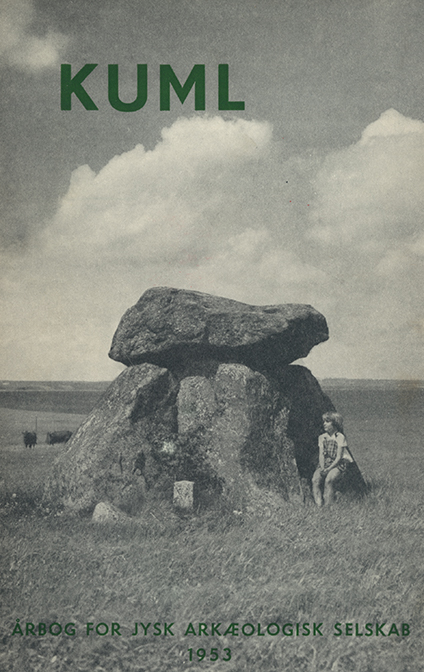Kuml
DOI:
https://doi.org/10.7146/kuml.v3i3.97106Nøgleord:
Kuml, arkæologi, Runic translation, RunologyResumé
KUML
In a number of Danish and Swedish runic inscriptions the word kumbl or kuml is found in the phrase gærþi kumbl þøsi, "made this monument". In Danish inscriptions it stands, with a single exception, in the plural, while it occurs in addition in the genitive singular on two Danish rune stones, in the old formula niut kumbls.
The Danish runologists, P. G. Thorsen and Ludvig Wimmer, are of the opinion that the word in the old formula designates the burial tumulus, and that the plural form is used to cover the tumulus and the rune stone in association. This use of the plural form is odd, while only one certain example is known of a rune stone standing on a tumulus containing a contemporary burial.
From the use of the word in Nordic and in other Germanic languages we can conclude that the basic meaning of kumbl is "sign, monument by means of which an object is distinguished or emphasized". The plural form used on the rune stones must consequently designate several monuments of some sort, and these can only be several erected stones.
The majority of Danish runic monuments no longer stand in their original position, but a small number have survived consisting of one (or more) rune stones in association with other stones bearing no inscriptions. The inscriptions also mention such compound monuments directly, some having the plural "stones"; in Swedish inscriptions the plural mærki, "monuments", also occurs. In addition to the normal association, gærþi kumbl, the combinations resþi or satti kumbl are also found; the use of the verbs "raise" and "set", which normally have "stone" as their object, supports the explanation put forward here.
The singular form in the formula niut kumbls may just as well designate the rune stone as the burial tumulus, while the meaning of kuml where it occurs in the sagas, which has been used to support the earlier explanation, cannot be determined with certainty.
The interpretation of kuml which is put forward here is linguistically simple. It is derived from the basic meaning, while the significance of the plural in relation to the singular is perfectly standard. Monuments consisting of several erected stones do in actual fact occur, and they are directly mentioned in the inscriptions.
Karl Martin Nielsen
Downloads
Publiceret
Citation/Eksport
Nummer
Sektion
Licens
Fra og med årgang 2022 er artikler udgivet i Kuml med en licens fra Creative Commons (CC BY-NC-SA 4.0).
Alle tidligere årgange af tidsskriftet er ikke udgivet med en licens fra Creative Commons.


